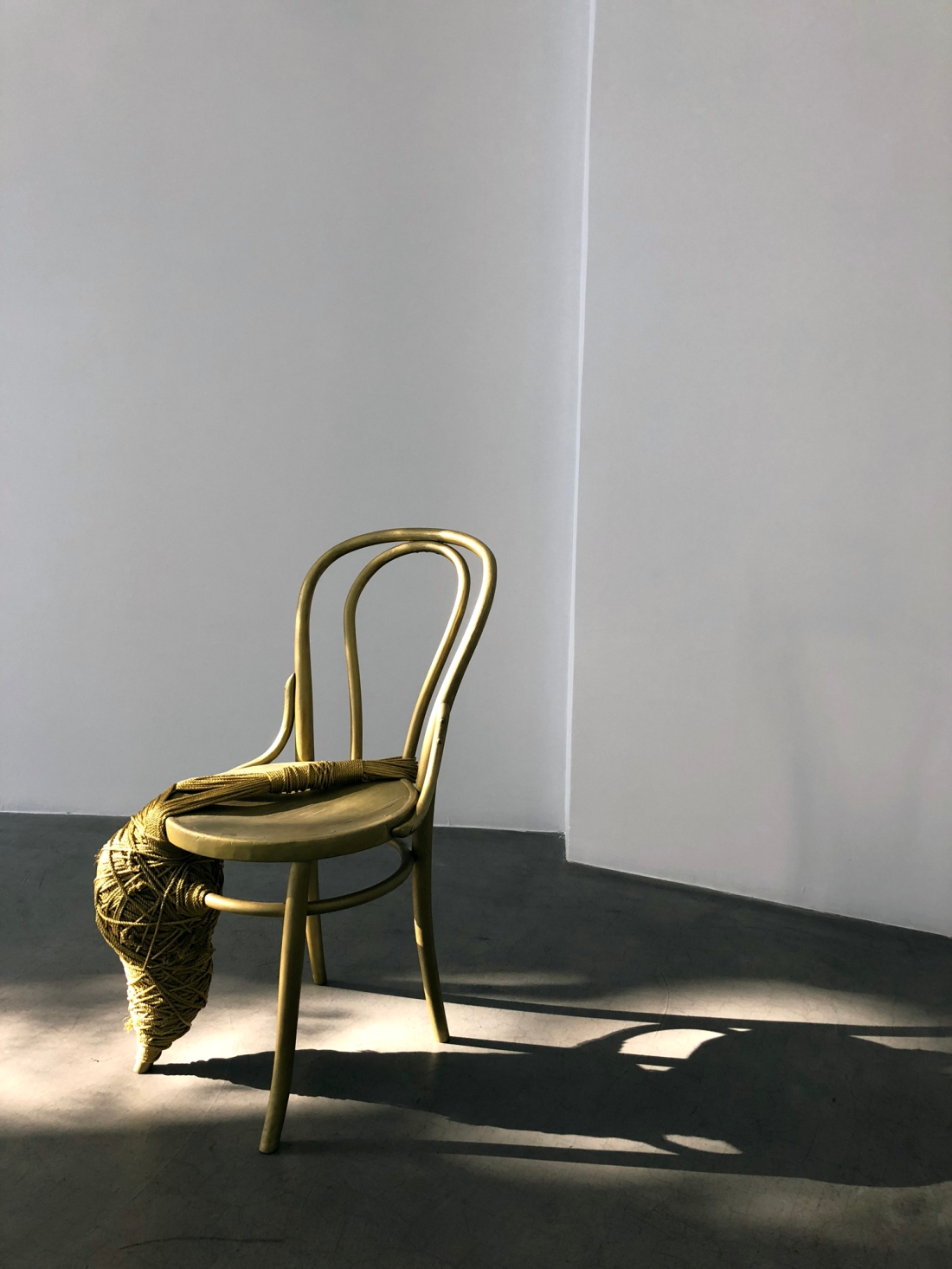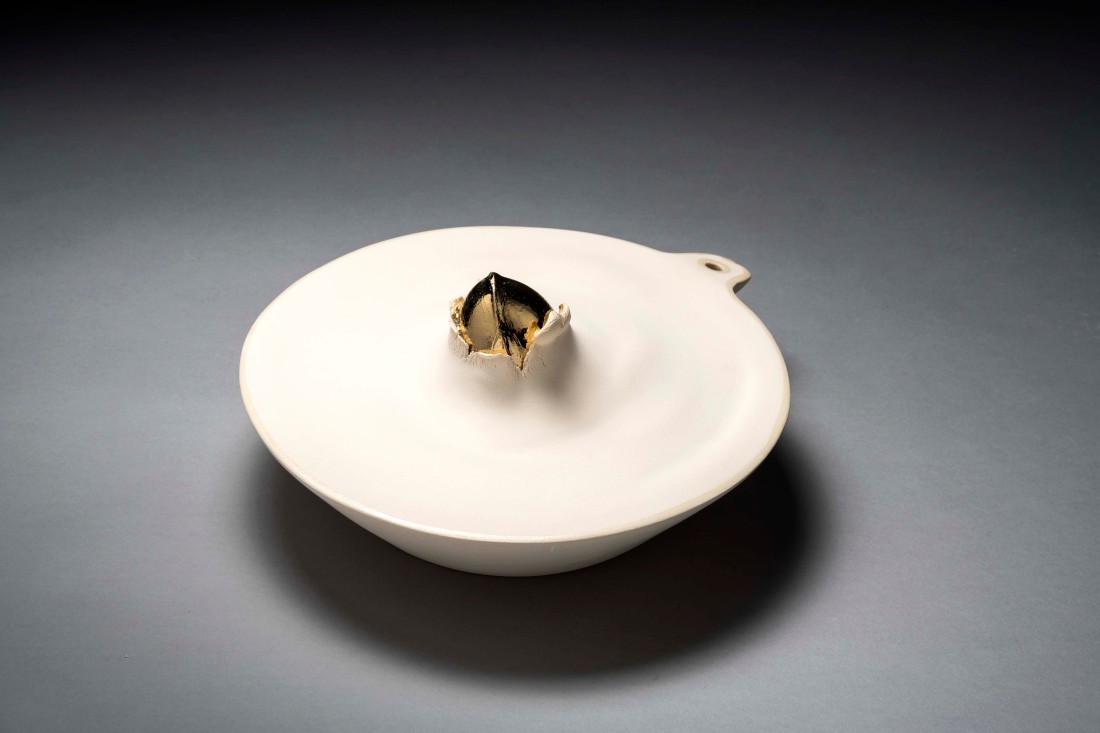
Combined technique, varied dimensions
Determined by its small size and its grand curiosity, Drina Gallery is a gallery of essences. Our exhibitions – sometimes a deep gaze into one author’s work, sometimes a tableau or a conversation between authors – must pack a lot of nuance and grace, strength and passion in those five imperfect walls. We have, to quote Ursula K. Le Guin, no time to spare and must think about what matters the most. This is why it was tempting to stage an exhibition, like Radical Softness, that speaks succinctly, but with maximum of clarity and insightfulness.
Radical Softness is a repository of starting points for you to unravel. Four artists offer four sides of the compass, and the map is your own eagerness to question the world that we often take for granted. The quest for the artists Olivera Parlić, Mia Ćuk, Valentina Savić and Marijana Ćurčić was to set course and tell a story through a tempered object – a living non-living thing – and a process that intensifies reality, sparks empathy, gentleness, sharpness and humour. The quest for the curator was to allow that story to flow without restrictions, evocatively and eloquently, out of their true selves via their distinct separate paths which all come to meet at some point of liminal physicality.
In the world of the (still, and predominantly) masculine orientation of object-making, the materials here on display knowingly appear soft and feminine: the hand-cast lollipops by Marijana Ćurčić (1987) in which she deposits deceased insects (always found, never intentionally harmed) into their tombs of glistening sugar is meant as a celebration and invocation, reminiscent of the broken needles deposited in the cushions of Shinto shrines in Japan at the end of their long service as a gesture of gratitude and recognition that no thing is too small to be considered useless. However, their place of rest is neither harmless nor eternal: sugar is an essence that can, in excess, poison. The 19th century Victorians found out that their mass-produced sweets often mixed sucrose with arsenic. We now know that sugar increases inflammation and feeds illness, and yet it’s still considered to be the taste of innocence.
Equally seductive, the unglazed and gilded ceramics by Valentina Savić (1970) take the prosaic everyday objects (such as menstrual pads) and turn them into blooms on her quirkily humorous vases. Savić is familiar with the language of gendered art and plays a gentle ping-pong with her the predecessors: her ceramics installations Network (2016), Dinner for Bunuel (2016) or the performance Gluttony (2017) could only be possible after Judy Chicago, Eva Hesse, Louise Bourgeois, or Helen Chadwick; yet they continue narrative and material explorations of their own. Her vessels and oversized poudrieres unpick the alienated relationship of the container and the contained, nursing various trials of simultaneously being and holding, the tenderness and the alarm of motherhood and creativity, the attempts at being more by leaving more out.
Meanwhile, the visual sequences of Olivera Parlić (1971) flow in a different direction. Discreet and secretive, her objects echo a certain melancholy empathy for the time spent above various vessels, in front of mirrors, on boudoir chairs while combing hair, in long hours of preparation and waiting. If Rachel Whiteread’s sculptures have shown us the spaces we’re not always aware of by casting them into tangible objects, Parlić makes the time spent around certain objects tangible, with the accuracy of detail that embodies trapped emotion. Within her slowly pacing objects, habitation and imagination peacefully occupy the same space, busy on some practical task that got out of hand, like a melody that haunts us from memory. These are not ‘machines with souls’ but souls confected out of gentle empathy for every kind of living and non-living thing.
Finally, in the fragment from her installation The Ship That Has Sunk From The Inside (first shown at the Artget gallery at the Belgrade Cultural Centre, 2017, curated by Miroslav Karić and Slađana Petrović Varagić), artist Mia Ćuk (1988) evokes that which eludes us by staging an experiment-like image loop by capturing the projected image from the glass slide into the archival slide box as is (without fixing the projected image), thus triggering perception of the process itself: a cast of the invisible mechanics of photography. The installation, which appears as a public monument to that old-fashioned family past time, the slide projection, is about an object that has, perhaps, never been present in the first place. The less we focus on the image, the more we sense the makings of the interpretative mechanisms which affect what we see, and what we eventually come to see are the contradictions between the meditative and the archival space, the well that blurrily captures the moon and the poem that might attempt to describe it.
All four artists retain humor and no small amount of criticality for the uneven paths towards identity, alienation, and the other(s). Their radically playful objects reflect intricacies of imagination that allow us to sympathise and hope – and that gives us all something to think about.
Dedicated to the memory of Ursula K. Le Guin (21.10.1929 – 22.1.2018.)

Fragment from the photo installation that includes slide projection in an archive box and sunlight-exposed found negatives on archive out of date photographic paper. Image courtesy of the artist.

Chair, gold rope, expanding foam, gaffer tape.

Stoneware, transparent glaze, gold.
Image courtesy of the artist.